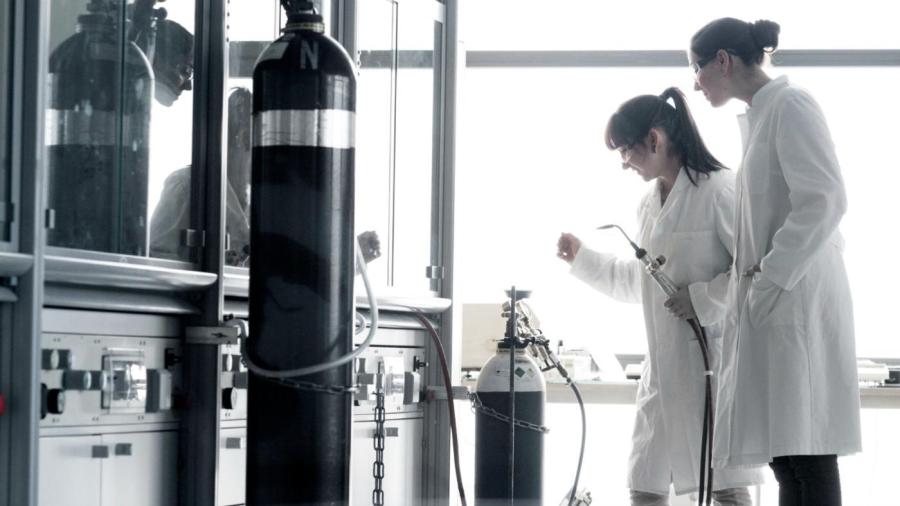What Is the Relationship Between Temperature and Volume?

According to Charles’ Law, if you hold a gas at a constant pressure, the volume varies in direct proportion with the temperature in Kelvins. As volume goes up, so does the temperature; as temperature goes up, so does the volume. The general formula is V = cT, where V is volume, T is temperature and c is the constant particular to the gas in question.
Solving direct proportion equations involves the use of a simple calculation with the terms involved. For example, if you have 2 liters of helium gas sitting at 400 K, and you increase the temperature to 800 K, finding the new volume is fairly simple. If V = cT, in this instance you have 2 = 400c, making c 1/200, or 0.05. Finding the new volume would require this equation: V = 0.05T. With a temperature that is now 800k, you solve: V = (0.05)(800). The new volume is 4 L. This matches the idea of direct proportion because the temperature doubled, and so did the volume.
One of the most commonly used experiments that teachers use to demonstrate Charles’ Law involves immersing a cylinder that contains a gas under a piston into a heat bath. As the heat increases, the gas pushes the piston upward, increasing the volume.





